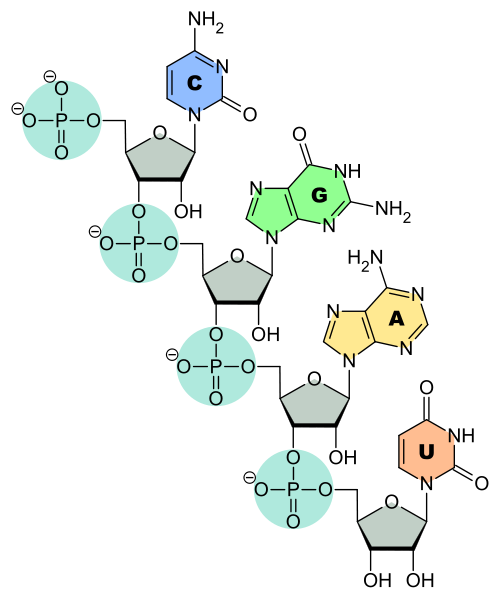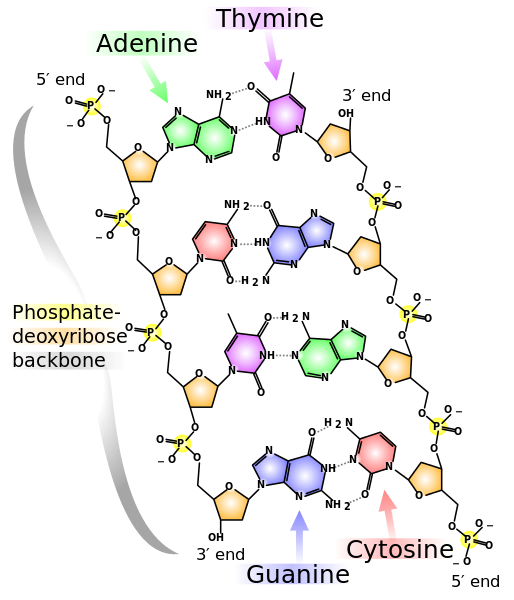Types of Nucleic Acids
There are two types of nucleic acids:
- Deoxyribonucleic Acid (DNA)
- Ribonucleic Acid (RNA)
|
|
DNA | RNA |
|---|---|---|
|
Sugar |
Deoxyribose |
Ribose |
|
# of Strands |
2 (Double-stranded) |
1(Single-stranded) |
|
Nitrogenous Bases |
ATCG |
AUCG |
|
Location |
Nucleus |
Throughout the cell |
|
Kinds |
One (DNA) |
m (messenger), t (transfer), r (ribosomal) |

Figure 12. A RNA structure, consists of four phosphate groups (represented by light green circles) attached to a five-carbon sugar (sage green pentagon). Each five carbon sugar is then attached different nitrogenous bases (different color hexagons located on the right side of the image). The top base (nucleotide) is cytosine, (represented by the letter C on a blue hexagon). The second base is guanine (represented by the letter G on a lime green hexagon). The third base is adenine (represented by the letter A on a gold hexagon). The fourth base is uracil (represented by the letter U on a tan hexagon).

Figure 13. A DNA Structure consists of a phosphate deoxyribose backbone (represented by the gold pentagons of both the left and right sides of the image). The middle of the image is the steps of DNA connected in pairs. Adenine (lime green hexagons on the left) and thymine (pink hexagon on the right) make up the top level of the structure. The second set of pairs are cytosine (orange hexagon on the left) connected to guanine (two purple hexagons on the right). The third row repeats the top level amino acids except the thymine and adenine have reversed positions. The thymine is now on the left, and the adenine is on the right. The second-row of the structure contains the same amino acids, guanine and cytosine, with their locations being reversed. The guanine is now on the left and the cytosine is on the right.



